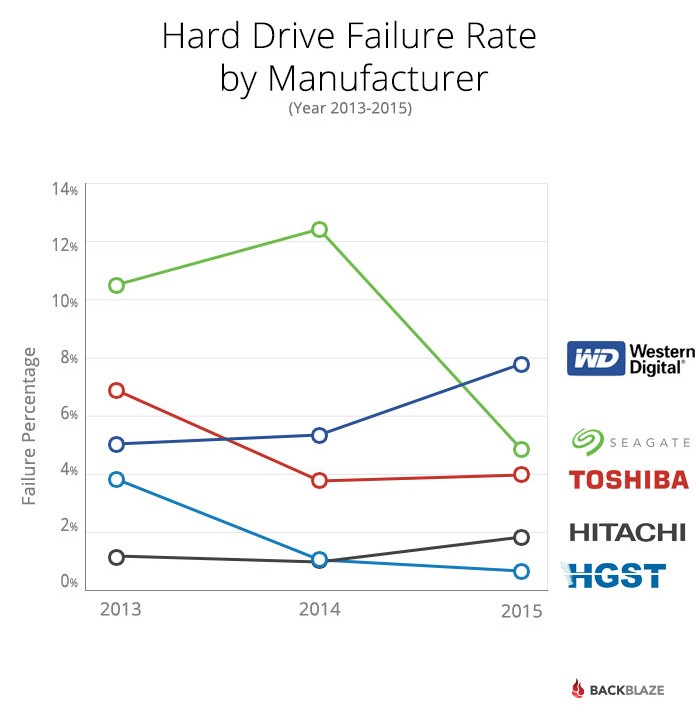Backblaze is a company that offers cloud storage/backup. To reduce costs, they use pods of drives stacked with consumer hard drives (generally) - and in a 24/7 (mainly data writing) business, that is extremely taxing on the disks. Backblaze publish all of their failure rates every 3 months, which offers a wealth of information about how well the drives that they are using are performing.
I've been the unlucky user of two Seagate ST3000DM001 3TB hard drives, both which failed last year, within 6-8 months of each other. The last one was so damaged, that no data could be retrieved from the platters after transplantation into a new drive; the head crash was that severe.
Backblaze also
experienced a huge failure rate of these drives.
Of 4247 drives of these drives in service,
- 10.45% failed in 2013
- 43.08% failed in 2014
- 30.94% failed in 2015.
That is an extraordinary failure rate, and is largely responsible for this graph that Seagate should be particularly embarrassed about:
 |
| Statistics Based on 49,056 Hard Drives |
With the death of many of the ST3000DM001 drives by 2015 (as well as a few other poorly performing Seagate drives, check the
Backblaze 2015 Q3 failure rate blog post for details), Seagate's failure performance rapidly improved.
For me? I was probably unlucky to lose two drives so quickly, but I've been bitten hard.
So now I've switched over to HGST.
Of important note, the 4TB drives (from all manufacturers), seem to be very good, with even 20,921 Seagate ST4000DM000 drives having a cumulative failure rate of just 3.06%. It just goes to show how much variability there is in the quality of drives even from a single manufacturer. But what it really highlights, for me, is the value of
blogs like this to do mass unbiased testing for us chumps who would otherwise blindly buy pieces of crap like the Seagate ST3000DM001.


